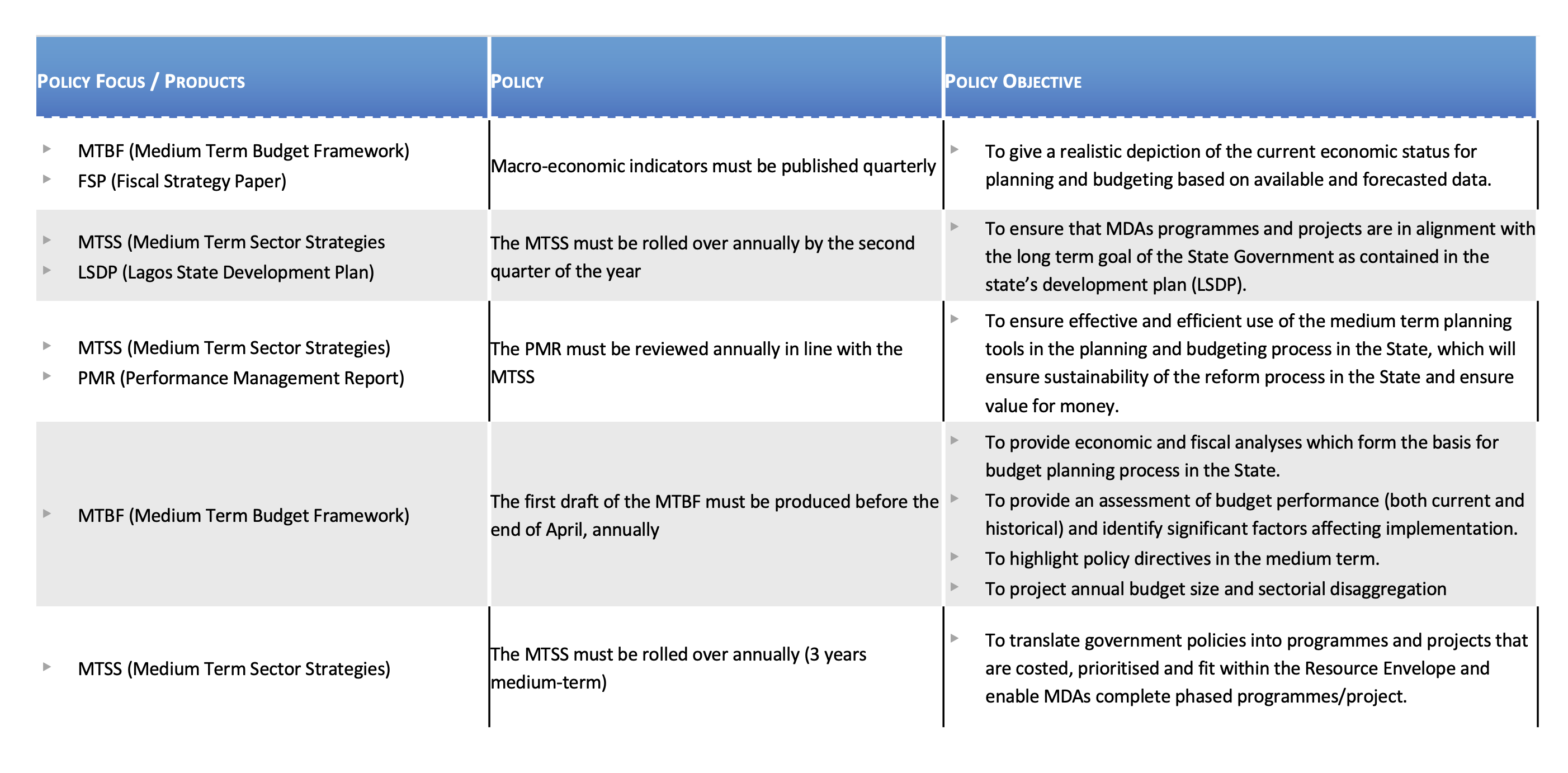Economic Planning Governing Policies
Medium Term Expenditure Framework is the mother “umbrella†that hatched the Medium Term budget processes. It is a process whereby “bottom-up†stigma of program (MTSS) are made to fit within a “top-down†resource constraint (MTFS). It is important to note that MTFS, MTBF and MTSS are the 3 components of MTEF.
The Medium Term Sector Strategy (MTSS) process represents bottom-up estimates of the cost of programs, both existing and new, on sectoral basis. It represents a crucial link in translating the long term goal of the State Government as contained in the development plan with set of programmes & projects which have been costed and prioritized in order to fit within the resource constraints. Major elements of MTSS include:
- Setting of resource guidelines;
- Recommendations on Medium Term changes in resource allocation to meet priorities and achieve sector
- Summary of overall sectoral objective and identifying main programmes;
- For each identified programme:
- What are the key issues to be addressed?
- What specific policies and objectives are to be pursued?
- What is the appropriate role of government?
- What are the implications for future public expenditure allocations? (i.e. % of total sector resources, efficiency measures)
MTSS represents a process through which strategic policy priorities are determined and aligned with resources allocation within the context of forecast information on the State’s macroeconomic and financial outlook. It is an integral part of the annual budget cycle and it integrates macro-economic framework, expenditure framework, revenue framework, debt strategy and other contingent liabilities. It is a foundation of long-term perspective planning and is the bottom part of the MTEF process
